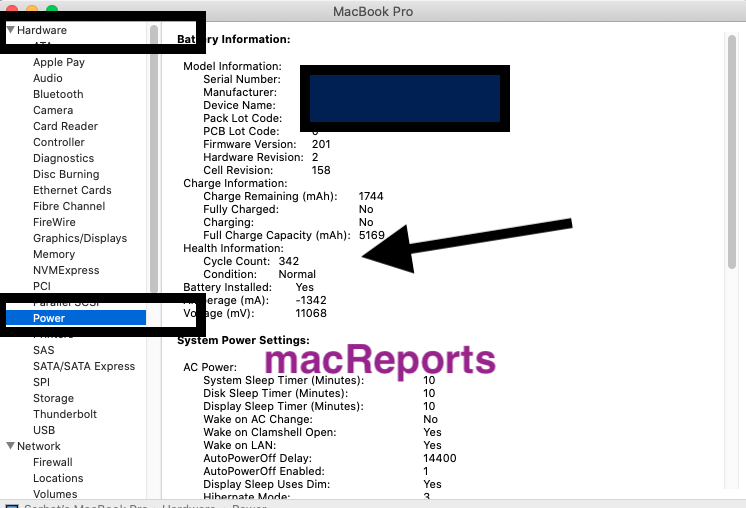Depending on your Macbook model (Macbook, Macbook Air, Macbook Pro, etc) and its battery health, your Mac battery will last several hours; and the average life of a battery can vary a lot. Is your battery not lasting as long as it did when you first got the computer? This is likely because the battery's capacity decreases over time. Battery Health Management on the Mac is similar to the Optimized Charging feature on iPhone and iPad, but it's designed for a different use case. It only works on MacBooks that ship with USB-C Thunderbolt 3 ports (everything including the 2016 MacBook Pro, 2018 MacBook Air, and after).
Apple's been in the courtroom for several years now, after the company was found to be slowing down older iPhones without the consent of the owners. The company's reasoning? The health of the batteries inside those iPhones had degraded to a point where running at full speed could trigger shutdowns or other issues.
What is battery health management? Apple offers a more technical explanation on how battery health management works. The battery health management feature in macOS 10.15.5 is designed to improve. A new 13.3″ Macbook system can run approximately 10 hours on battery with single charge and up to 1000 recharges according to Apple, but as your system gets older or increase the charging cycles, its battery life also reduces. These rechargeable batteries of Mac have discrete number of cycles, which represents to their life time.
That series of lawsuits has also led to Apple adding a very useful tool into its products, including the Battery Health feature.
Battery Health Macbook Air
The feature lets you see how well your battery is faring under your usage, and also tells you if you can do things to improve the battery's health, or if you need to replace it. That same tool is also coming to the Apple Watch, and macOS is getting some new stats pages for a more complete picture of your battery use, as well.
Here's how to check the battery health of your iPhone, iPad, Apple Watch, and MacBook
It's pretty simple to check the new inbuilt tools that Apple added, so you can keep an eye on your not-user-replaceable battery.

iPhone or iPad:
- Open the Settings app
- Scroll down to Battery and tap
- Tap on Battery Health
- You'll see percentages detailing your battery's health, plus suggestions if your battery is less than optimal Image: KnowTechie
Invisible 2 3 – easily hide your personal files permanently. This last screen will also tell you if your battery has degraded to the level of needing a replacement. Just know that'll cost around $80 if so.
Apple Watch:
You'll need to be updated to WatchOS 7 to be able to check the battery health on your Apple Watch. So, until the public beta arrives, you'll need to be using a developer account to access this currently. If you are, here's how to check:
- Open the Settings app
- Scroll down until you see Battery, then tap on it
- Tap Battery Health
Battery Health Mac Os
That's it, you'll now see a percentage indicating how healthy your battery is, and any advice you may need on how to improve it.
MacBook:
Apple added a Battery Health feature to macOS back in April, but macOS Big Sur (the next major update) brings even more battery tools. You'll be able to see exactly which apps are draining your battery, both as a daily rundown or over the last ten days.
Battery Health Macbook Pro 2013
- Open System Preferences from the Apple logo at the top left of your screen
- Click on Battery
You'll now see graphs of your Mac's energy usage on the Usage History tab, along with a graph of Screen On Time, so you can match the two together. You can also check the battery health of your MacBook by going to System Preferences > Power Saver > Battery Health.
That'll give you the health status, and an option about disabling Battery Health Management, which automatically adjusts performance and the maximum charge of your MacBook's battery depending on your usage habits. It's pretty much the same system that's in iOS, so it will be interesting to see how well it works when it hits my work laptop in the fall.
Optimized battery charging
Image: KnowTechie
Keyboard maestro 9 0 5 0. While you were checking out your battery health on your iPhone, you probably saw a toggle for Optimized Battery Charging. This handy setting learns your charging routine, then instead of fully charging your device, it'll charge to 80% until before you usually pick it off the charger, when it will finish charging to 100%. That puts less strain on your battery over time, hopefully resulting in a longer lifespan for your device.
Oh, and while we have you. If you had an iPhone 6, 6 Plus, 6S, or SE, or an iPhone 7 or 7 Plus that experienced slowdowns, go join the class action so you get some cash for your troubles.
What do you think? Plan on using these features to check on your iPhone's battery health? Let us know down below in the comments or carry the discussion over to our Twitter or Facebook.

